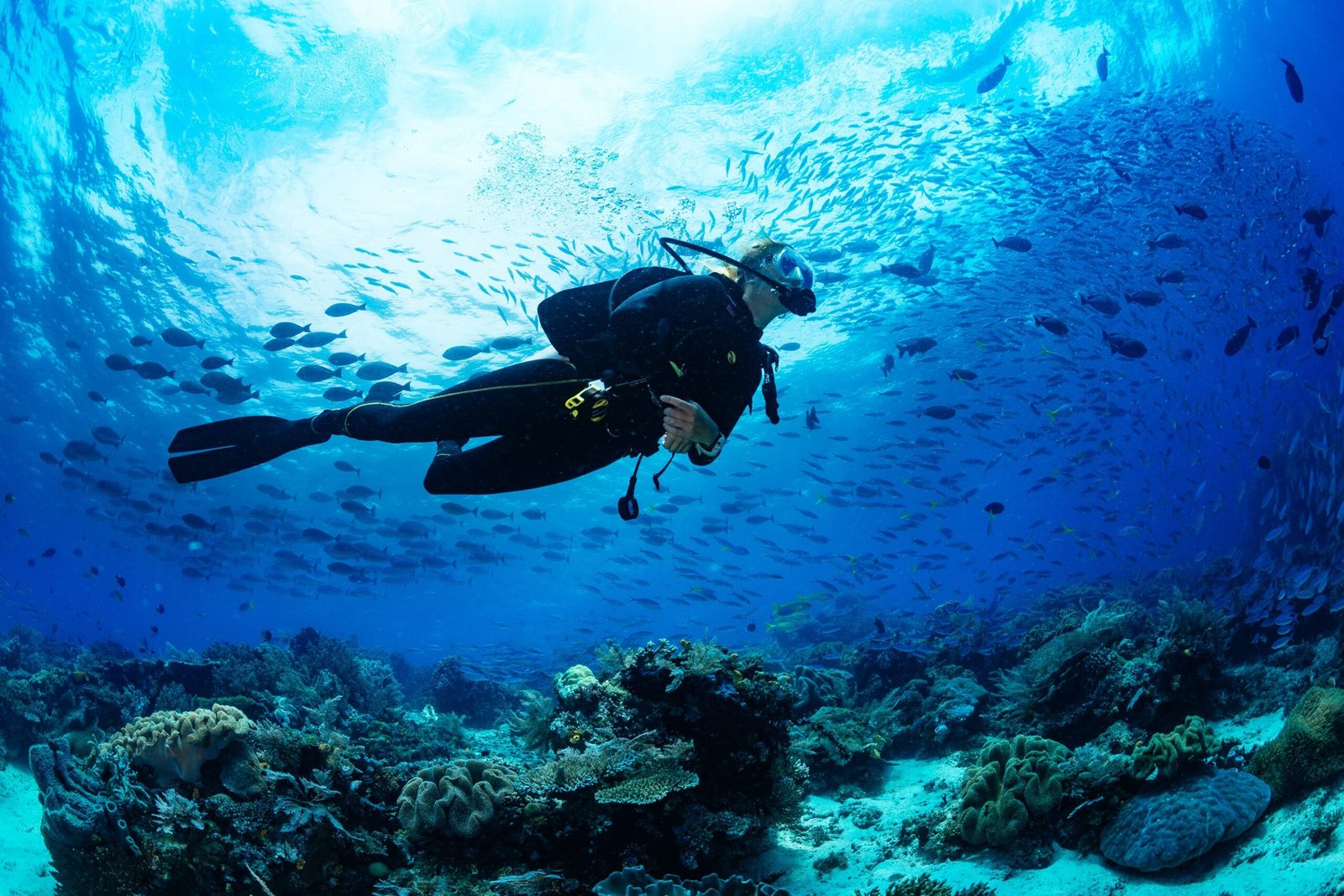If you’re working toward a rescue diver certification, you must understand everything you’ll need in a rescue diver equipment list. From a signal tube to a first aid kit, there are several tools that all rescue divers should carry in case of an emergency.
Why Rescue Diver Equipment Matters
Rescue diver equipment is essential for helping people in emergency situations in the water. Many rescue diver equipment intersects with regular scuba diving equipment, but some items are specific to rescue certification like extra suits and full face masks.
Among the different scuba certifications, a rescue diver certification stands out because it provides specialized training in dealing with dangerous situations.
For example, as a PADI rescue diver, you learn about the importance of equipment like dive knives, military fins, and pop-up floats. You’re also taught how to recognize signs of distress, fix equipment problems, and even perform self-rescue.
Essential Rescue Diver Equipment
This is by no means a comprehensive list, but here are some of the main essentials that should be included on every rescue diver equipment list.
High-Quality Mask and Snorkel
Rescue divers should invest in a high-quality full-face mask and snorkel to improve visibility, have access to voice comms, and protect against contaminants and swift water.
Fins with Power and Maneuverability
Rescue diver fins can technically be any fins you feel comfortable in the water. You should be able to move quickly and powerfully. Some rescue divers opt for military fins, as they’re made from a lightweight material and allow for easier maneuverability.
Buoyancy Control Device (BCD)
Like any other scuba diver, rescue divers need a reliable buoyancy control device (BCD). Look for a BCD with good lift capacity, durability, and storage compartments.
Regulator with Octopus and Pressure Gauge
Another must-have for rescue diving equipment is a regulator with an octopus (backup regulator) and pressure gauge. This will allow you to share air with a buddy in an emergency.
Dive Computer
Rescue divers should have a high-quality dive computer to track depth, air, and other important values. Find one with reliable alarms, air pressure information, and self-adjusting decompression models.
Surface Marker Buoy (SMB) or Signal Tube
Invest in high-quality surface markers and signal tubes to cue visibility during rescue dives. These indicators are crucial for keeping your team updated on your position.
First Aid Kit and Pocket Mask
You should always carry basic emergency supplies while rescue diving. A scuba first aid kit contains eyewash, vinegar (to neutralize stings), bandages, and pain relief gel. A pocket mask is also crucial for administering oxygen in emergencies.
Additional Rescue Gear for Advanced Preparedness
Along with the essentials listed above, it’s a good idea to carry extra items to help in an emergency. You’ll learn more about this kind of rescue diver equipment in a rescue diver certification course.
Rescue Line or Reel
Synthetic ropes are used as rescue lines and reels in rescue diving. You can attach yourself to another diver, keep track of surface buoys, and connect to a surface team during a rescue.
Cutting Tool
A dive knife or line cutter has many uses, especially as a rescue diver. You can use it to free yourself and others from emergency entanglements, mark your position, and even defend against dangerous marine animals.
Whistle and Dive Light
Scuba whistles that are designed to be heard underwater are invaluable tools for rescue diving. Use your whistle to alert other divers of danger or to communicate distress. Dive lights are also handy in signaling an emergency and for illuminating your surroundings.
Recommended Rescue Diver Equipment for PADI Certification
The Professional Association of Diving Instructors (PADI) has specific requirements for rescue diver certification. You must be at least 12 years old, have completed an Underwater Navigation Dive, and have emergency first response (EFR) training within the last 24 months.
To complete a PADI rescue diver course, you must also purchase a rescue breathing mask and a dive accident management slate. Other equipment will be available to you, but it’s always a good idea to invest in your own equipment—especially if you plan on using it frequently in the future. Owning your own mask/snorkel, fins, and dive computer is highly recommended.
Preparing for Rescue Diver Certification with Silent World Dive Center
At Silent World, we offer PADI rescue diver certification courses for anyone interested in mastering this skill set. The course consists of two days of instruction, in-water practice, and rescue scenarios. You will also take the rescue diver final exam.
In the PADI rescue diver class, you will learn how to:
- Self-rescue
- Rescue panicked divers
- Rescue unresponsive divers
- Recognize stress in other divers and help them
- Use emergency equipment
Silent World also offers equipment rentals for this course, including masks and fins, snorkels, weights, a buoyancy control device (BCD), a regulator set, and scuba tanks.
Book your rescue diver course today, or contact us to learn more about eligibility.
FAQs About Rescue Diver Equipment
Can I use my regular diving gear for rescue diving?
Yes, for the most part, you can use regular scuba gear for rescue diving. However, you may need to make some adjustments such as using a full face mask and lighter fins. You will also probably need to buy additional emergency equipment like a dive knife, pocket mask, and first aid kit.
How much equipment should I carry?
Rescue divers do need to carry more equipment than the average scuba diver. You should have enough equipment to help yourself and another diver.
What’s the best way to store and maintain rescue gear?
Always rinse your rescue scuba gear in fresh water after a dive, let everything fully dry, and store items out of direct sunlight. UV rays can easily damage sensitive scuba equipment.





